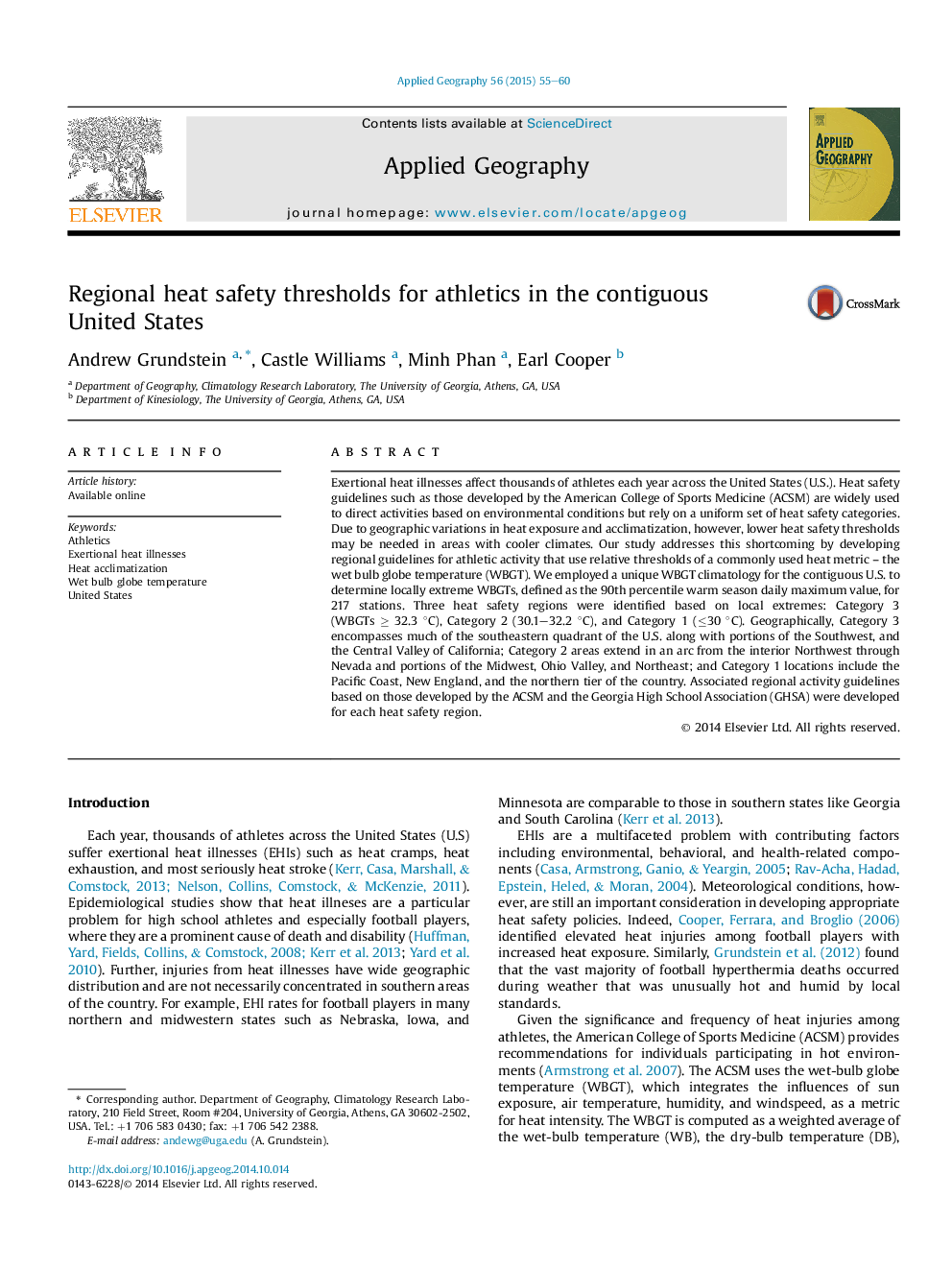| Article ID | Journal | Published Year | Pages | File Type |
|---|---|---|---|---|
| 6538636 | Applied Geography | 2015 | 6 Pages |
Abstract
Exertional heat illnesses affect thousands of athletes each year across the United States (U.S.). Heat safety guidelines such as those developed by the American College of Sports Medicine (ACSM) are widely used to direct activities based on environmental conditions but rely on a uniform set of heat safety categories. Due to geographic variations in heat exposure and acclimatization, however, lower heat safety thresholds may be needed in areas with cooler climates. Our study addresses this shortcoming by developing regional guidelines for athletic activity that use relative thresholds of a commonly used heat metric -- the wet bulb globe temperature (WBGT). We employed a unique WBGT climatology for the contiguous U.S. to determine locally extreme WBGTs, defined as the 90th percentile warm season daily maximum value, for 217 stations. Three heat safety regions were identified based on local extremes: Category 3 (WBGTs â¥Â 32.3 °C), Category 2 (30.1-32.2 °C), and Category 1 (â¤30 °C). Geographically, Category 3 encompasses much of the southeastern quadrant of the U.S. along with portions of the Southwest, and the Central Valley of California; Category 2 areas extend in an arc from the interior Northwest through Nevada and portions of the Midwest, Ohio Valley, and Northeast; and Category 1 locations include the Pacific Coast, New England, and the northern tier of the country. Associated regional activity guidelines based on those developed by the ACSM and the Georgia High School Association (GHSA) were developed for each heat safety region.
Related Topics
Life Sciences
Agricultural and Biological Sciences
Forestry
Authors
Andrew Grundstein, Castle Williams, Minh Phan, Earl Cooper,
